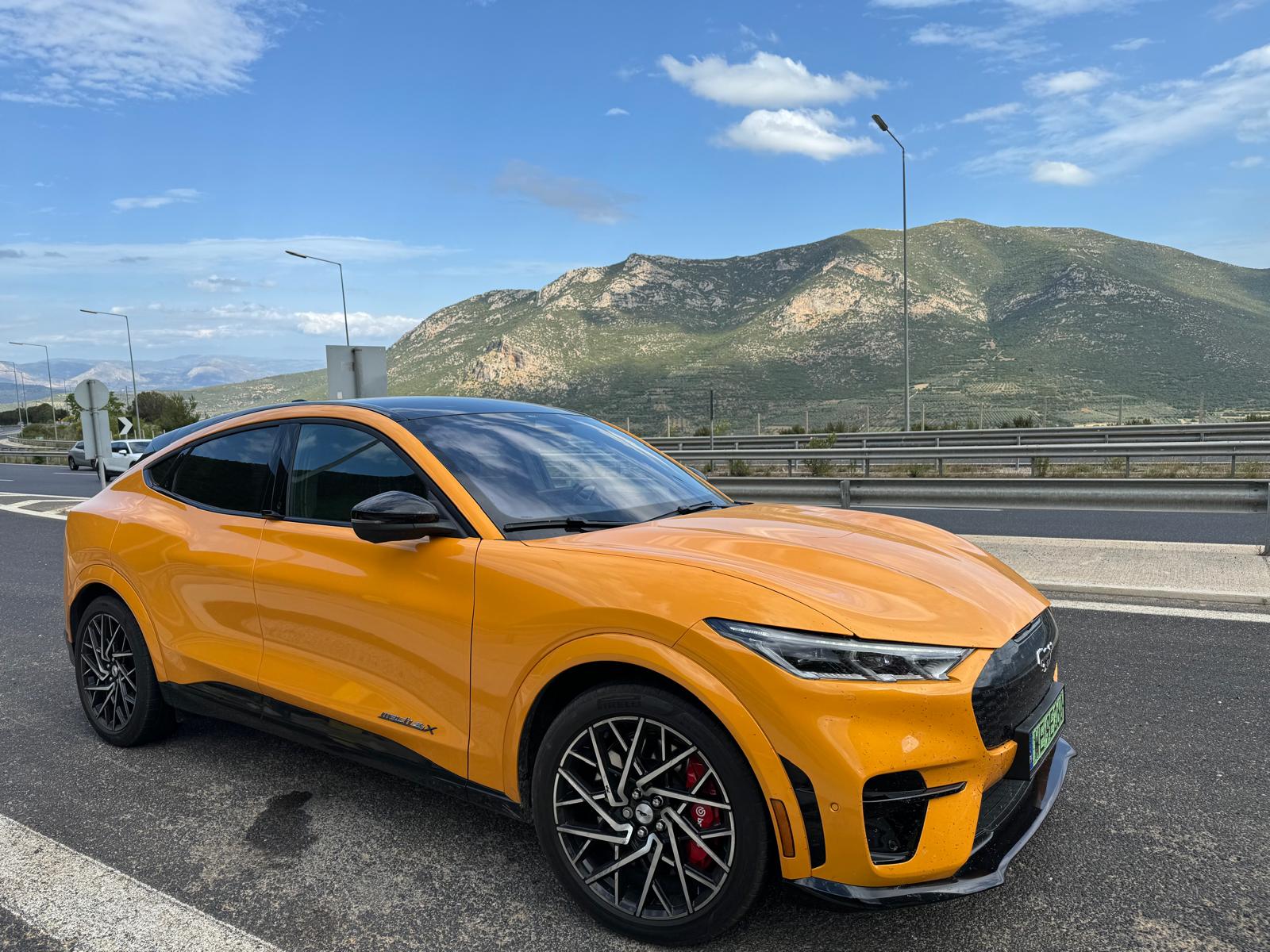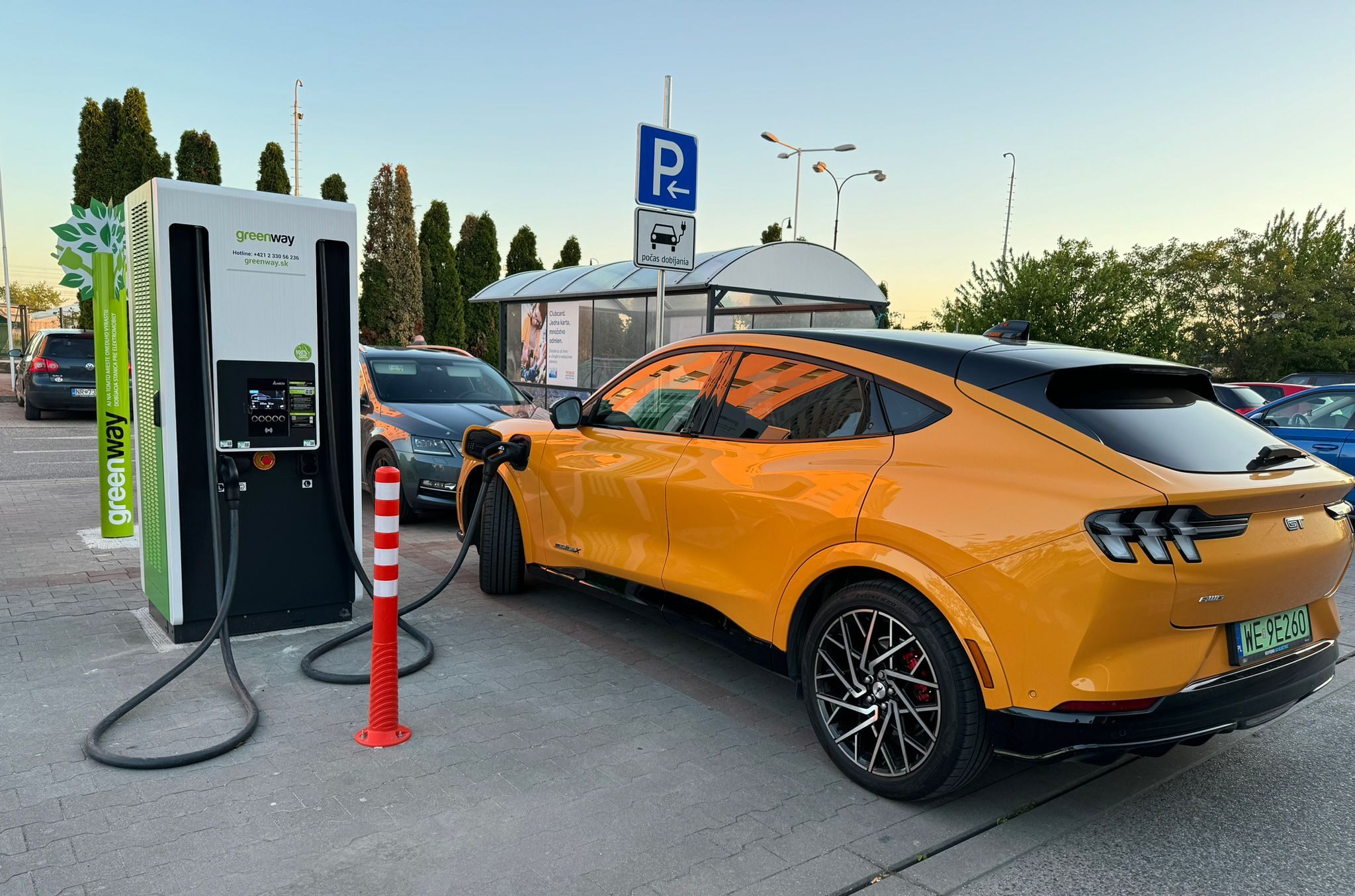Ford Mustang Mach-E Explores Eastern European Charging Infrastructure
Sign up for daily news updates from CleanTechnica on email. Or follow us on Google News!
What’s the point, one may ask, of reporting on EV road trips today when they have become so common? Even the top Polish energy and EV journalist, Bartłomiej Derski, recently tweeted that same remark after doing a Poland–Croatia trip twice in two different EVs (750 miles each way) without any hassle and with plenty other EVs around him. The charm is gone. EV early adopters are no longer road heroes. All the Johns and Kates do the same trips without feeling they are doing anything out of the ordinary. Yet, most people still don’t drive EVs and wonder about their capability on long trips, so I’m back reporting on another European EV trip, this time in a Ford Mustang Mach-E. Happily, the EV charging landscape in Central and Eastern Europe has improved greatly in recent years, and this trip proves it.
Tomasz Gać is the Polish EV pioneer who took the trip. He bought his first Nissan LEAF back in 2013 before almost anybody here understood the revolution looming on the horizon. Since then, he has travelled all around Europe in various electric models — the Nissan LEAF, Nissan e-NV200, Tesla Model S, Hyundai Kona EV, and numerous other. Many a time, I recounted his adventures for CleanTechnica, including when he travelled to Sicily and Albania. Today, he is travelling in comfort in a glaringly orange Ford Mustang Mach-E GT from Poland through the Balkans to the historic city of Sparta in Greece.

I’ll use this opportunity to draw some comparisons to what we remember from 2018 and what we can see today. The context is broader, as Europe has just introduced the Alternative Fuels Infrastructure Regulation (AFIR), setting very ambitious goals for all member states concerning deployment of charging infrastructure for both passenger and heavy-duty vehicles. While many European countries are meeting the targets defined for 2025 today, forecasts of future EV uptake suggest the infrastructure will need to quadruple. The number one challenge today seems to be accelerating the process of granting permits and fast-tracking charging hubs along TEN-T routes. Let’s see what the starting point is in our subjective overview of the states on the Mustang Mach-E’s way.
Slovakia
Slovakia’s charging name is GreenWay, an unquestionable leader and a good friend of CleanTechnica for years. The first impression is that the power of most chargers is 100 kW or greater now, as compared to 2018, when 50 kW was still considered a great option. It’s worth noting that many of the chargers still include ChaDeMo plugs, so older vehicles, most notably from Nissan, are still catered to.
Apart from GreenWay, there is a good coverage of other providers such as Shell, Drive&Charge, and Lidl. However, the ease of using a GreenWay roaming card naturally narrowed our search to this one option. When checking current reports on European charging targets, Slovakia looks very solid, with its infrastructure already meeting 2024 and 2025 targets. Work needs to be done, though, to meet 2026 requirements, and there seems to be no reason for concern.

Hungary
Tomek’s team still have vivid memories of being shouted away from a Nissan charger by an unfriendly guard, as Teslas were not allowed to use it. That was the first attempt to charge in Hungary back in 2018. The network that saved the day at the time was … Kaufland, a chain of supermarkets with a strong policy of installing chargers next to their locations (interestingly, the location in my small town in Poland has just gotten a Kaufland charger). Anyway, these dark days are over and Hungary welcomes EV users with a good network of fast chargers, especially along motorways where most petrol stations from MOL, OMV, and Shell have a DC charger in place. Inner city areas are well covered with supermarket networks, especially Kaufland’s and Lidl’s.
These are serious improvement since 2018 and the shouting guard at a Nissan store. This subjective view of infrastructure rollout doesn’t mean Hungary is on track with European targets. According to EAFO, Hungary is lagging behind its 2024 targets, so it needs to multiply its efforts to meet the goals for 2025 and further on.

Romania
Back in 2018, Romania only offered supermarket charging stations — Kaufland to the rescue again. We slipped through Romania then nonetheless and now we could enjoy another easy drive, as the charging stations have multiplied with Rompetrol stations leading the way. The uptake of EVs may be slower than in other countries here, and hence it has a good result in meeting AFIR targets for 2024. Romania is doing okay today, but around the corner there is a lot of infrastructure investment to be done to keep up with the pace of new EV purchases.

Bulgaria
Bulgaria’s charging infrastructure used to be confined to the capitol of Sofia plus a few supermarket stations. It’s undergone a revolution in the number of public chargers, especially in cities but less so at petrol stations. Meanwhile, sadly, the fleet of EVs remains at a very low level. That is the reason Bulgaria may be a leader in charging stations per electric vehicle but we will not call it a leader in e-mobility, at least not yet. The charging station targets for 2026 are already fulfilled. Time to bring the fleet to use the infrastructure!

Greece

Tomek and his team turned to Albania and Macedonia 6 years ago and so never got to Greece. No comparisons can be made to the situation back then, and we can only judge what’s there today. Today is looking quite good. Considering the range of modern EVs, the density of charging stations appears to be sufficient. With the Mustang’s 98 kW battery, you can travel everywhere at ease. The DEI Blue network seems to be the most common one, and we used it after downloading the network’s PCC Blue app. That would be in line with the Greek experience of our other travelers, journalists from WysokieNapiecie.pl who travelled through Greece in 2022. Although the network was okay, the roaming services on the cards they had were unavailable. The subjectivity of our views is exposed here more than in other places. Greece is way below the European targets and may find it difficult to catch up. More pressure is needed, ideally from a growing community of EV owners.
All in all, the travelling experience is worth the effort. EV adventures are always present, especially when you decide to ask for a charging socket at every hotel or lodge you stay at. We all know nothing is better than a good night’s charge from a simple wall socket. Let it drip when you enjoy your evening wine and a good sleep. I promise we will continue to test EVs and charging infrastructure all across Europe. Europe is motivated to lead the way in EV uptake and infrastructure rollout is necessary to accomplish that goal. Long live AFIR!
All photos courtesy of Tomasz Gać.
Have a tip for CleanTechnica? Want to advertise? Want to suggest a guest for our CleanTech Talk podcast? Contact us here.
Latest CleanTechnica.TV Video
CleanTechnica uses affiliate links. See our policy here.


